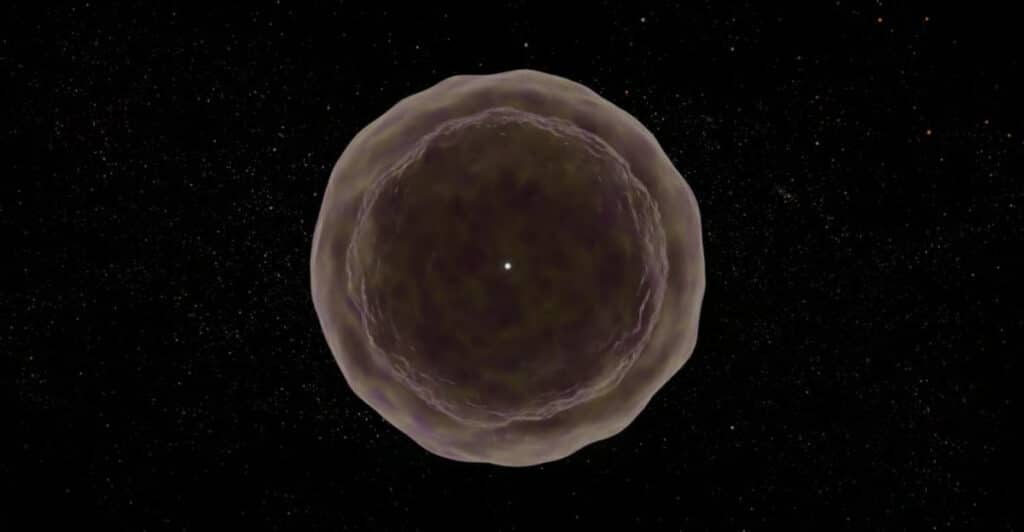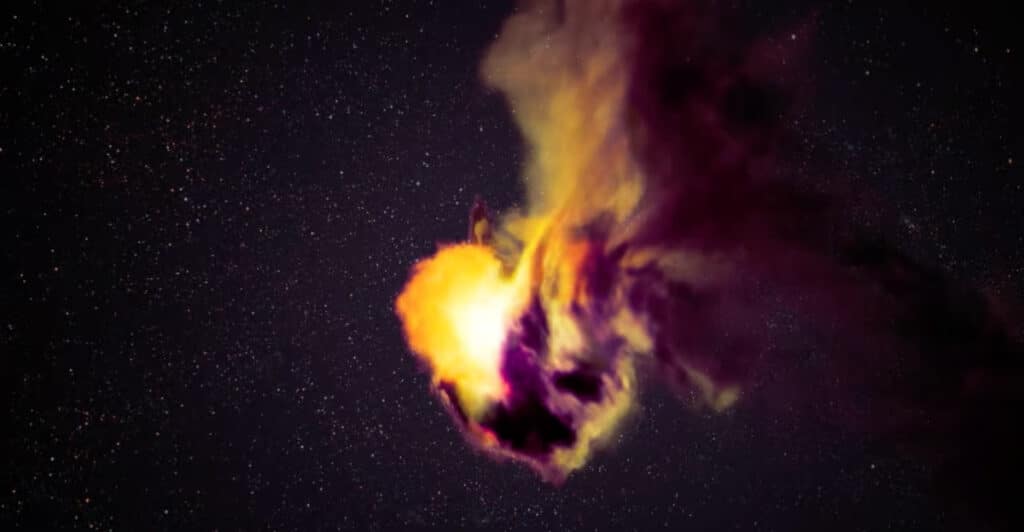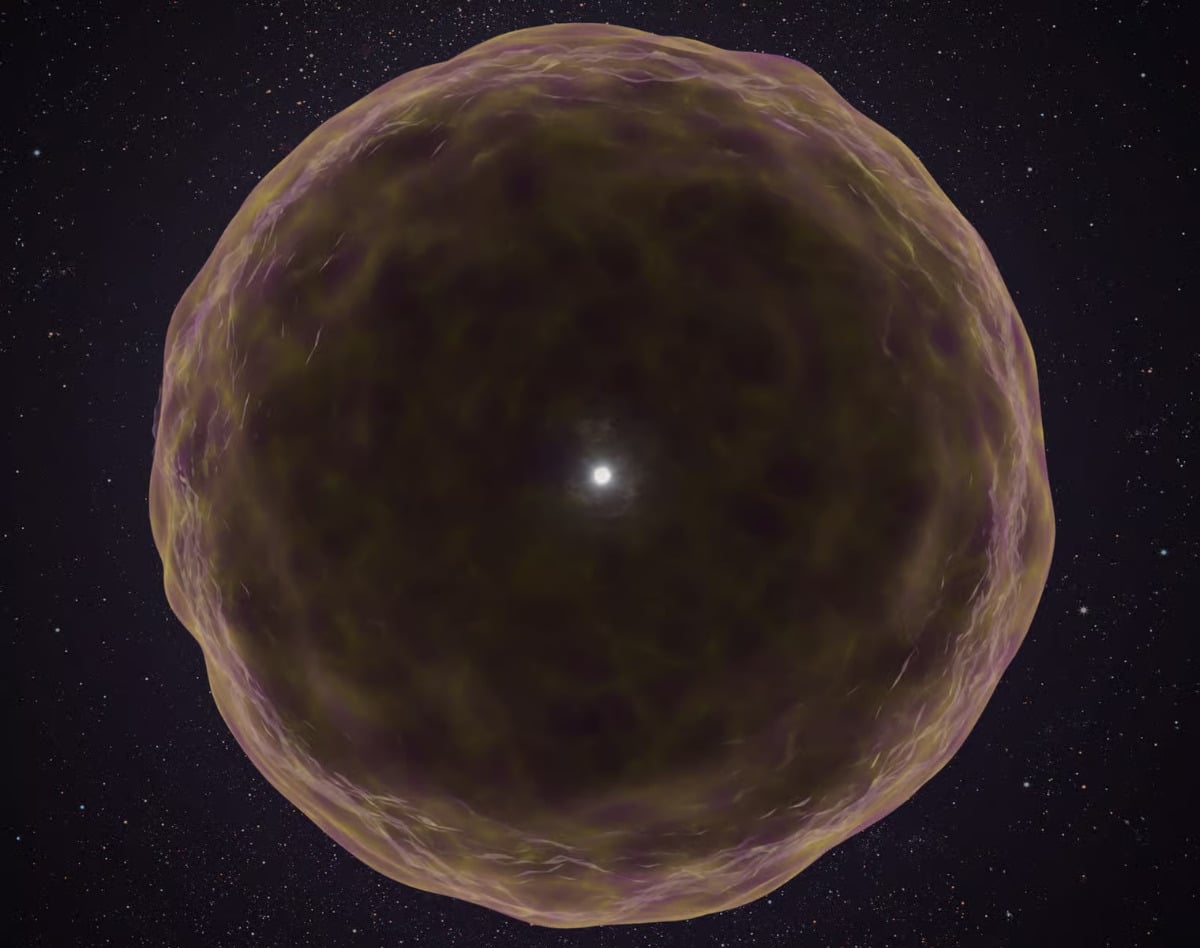Astronomers have just witnessed something unprecedented: a supernova rich in heavy elements. Unlike typical stellar explosions, which show traces of hydrogen or helium, this blast revealed an abundance of silicon, sulfur, and argon. It’s the first time such a signature has ever been recorded—and it could reshape our understanding of how massive stars die.
“This event doesn’t look like anything we’ve ever seen before,” said Adam Miller, an astronomer at Northwestern University and co-author of the study published in Nature. The explosion, dubbed SN2021yfj, was detected 2.2 billion light-years away by the Zwicky Transient Facility. What made it extraordinary wasn’t just the blast itself, but the chemistry it left behind.

Toward the end of its life, SN 2021yfj’s progenitor underwent two rare and extremely violent episodes of instability, ejecting shells rich in silicon (gray), sulfur (yellow), and argon (purple). © Adam Makarenko, W.M. Keck Observatory
A supernova explosion unlike any other
Normally, massive stars shed their outer layers before collapsing. But SN2021yfj seems to have gone further than any star observed before. “This is the first time we’ve seen a star practically stripped to the bone,” explained Steve Schulze, also of Northwestern University.
Spectral analysis revealed intense signals from heavy elements forged in the star’s final stages of nuclear fusion. That means by the time it exploded, nearly everything produced during its lifetime had already been lost—leaving only the last elements formed just months before the blast.

The collision of massive shells ejected by the progenitor of SN 2021yfj was so violent that it created a supernova visible 2.2 billion light-years away. © Adam Makarenko, W.M. Keck Observatory
More observations needed to understand
What could cause such an extreme scenario? Scientists suggest several possibilities: a violent interaction with a companion star, a massive pre-supernova eruption, or exceptionally powerful stellar winds. Another theory is that the star essentially ripped itself apart. As its core grew hotter and denser under gravity, nuclear fusion reignited with explosive force, blasting away its outer layers. Each new instability may have stripped even more matter.
“One of the recent shell ejections could have collided with an older shell, producing the bright emission we now call SN2021yfj,” Schulze noted. This points to a potentially new class of explosions—known as Type Ien supernovae—that might not completely destroy their stars. But Miller remains cautious: “I wouldn’t bet my life on this explanation. We’ve only seen one example so far. We need many more observations to truly understand what’s going on.”
This discovery not only expands the catalog of stellar death but also raises new questions about how massive stars evolve and explode. If confirmed, events like SN2021yfj could open a new window into the violent, element-forging processes that shape our universe.
![]()
Nathalie Mayer
Journalist
Born in Lorraine on a freezing winter night, storytelling has always inspired me, first through my grandmother’s tales and later Stephen King’s imagination. A physicist turned science communicator, I’ve collaborated with institutions like CEA, Total, Engie, and Futura. Today, I focus on unraveling Earth’s complex environmental and energy challenges, blending science with storytelling to illuminate solutions.


